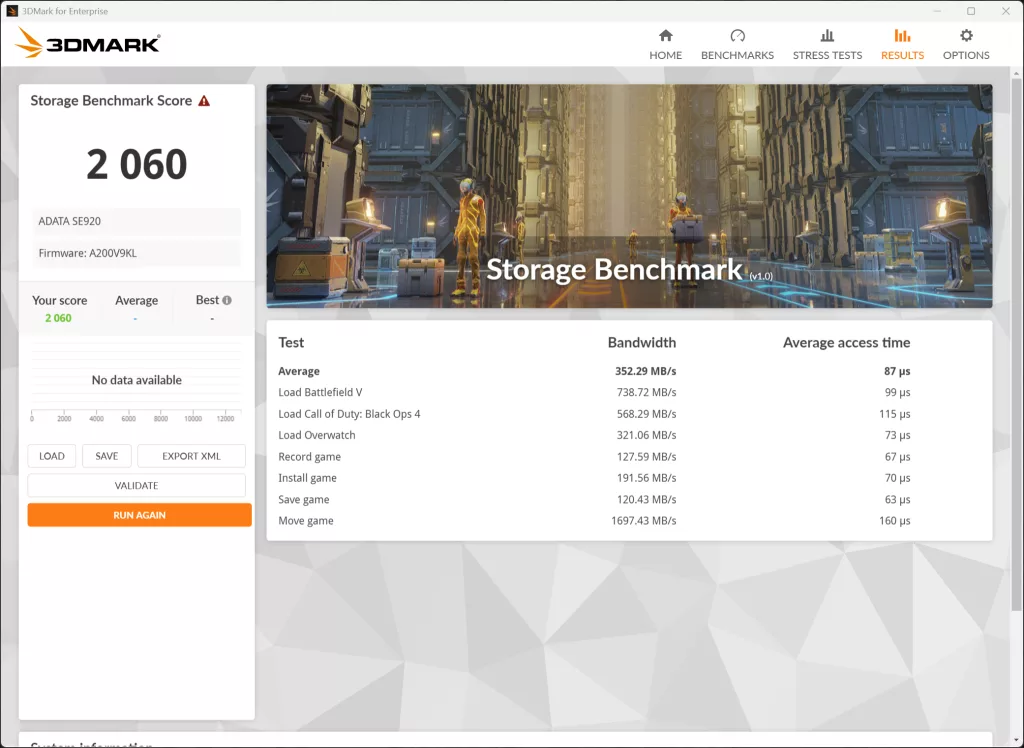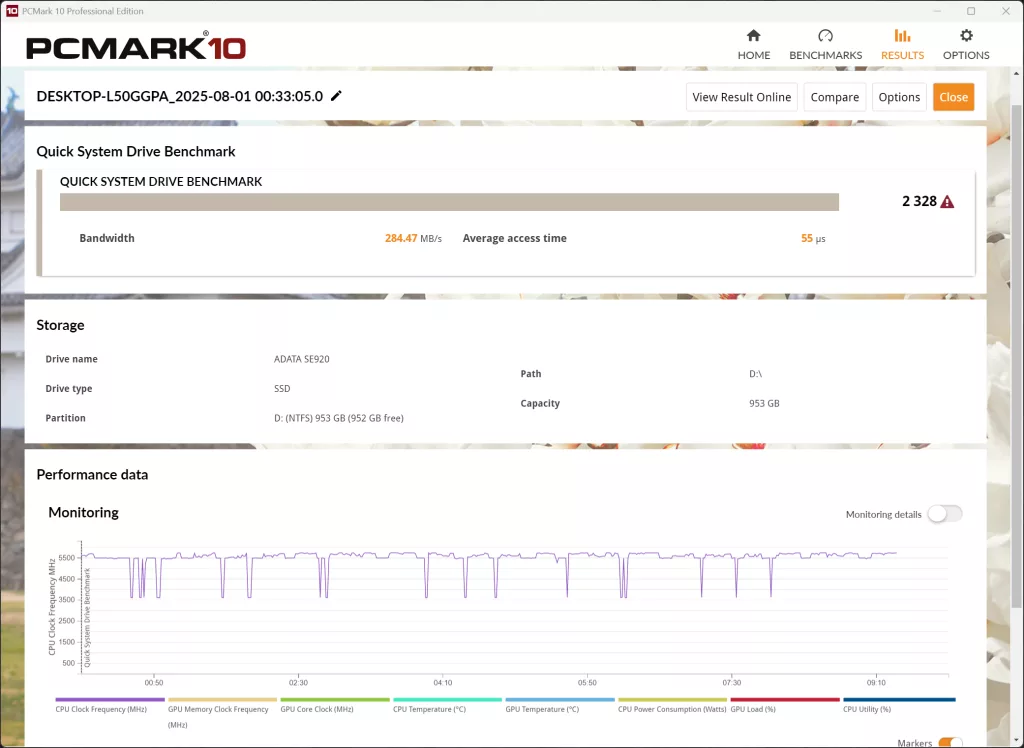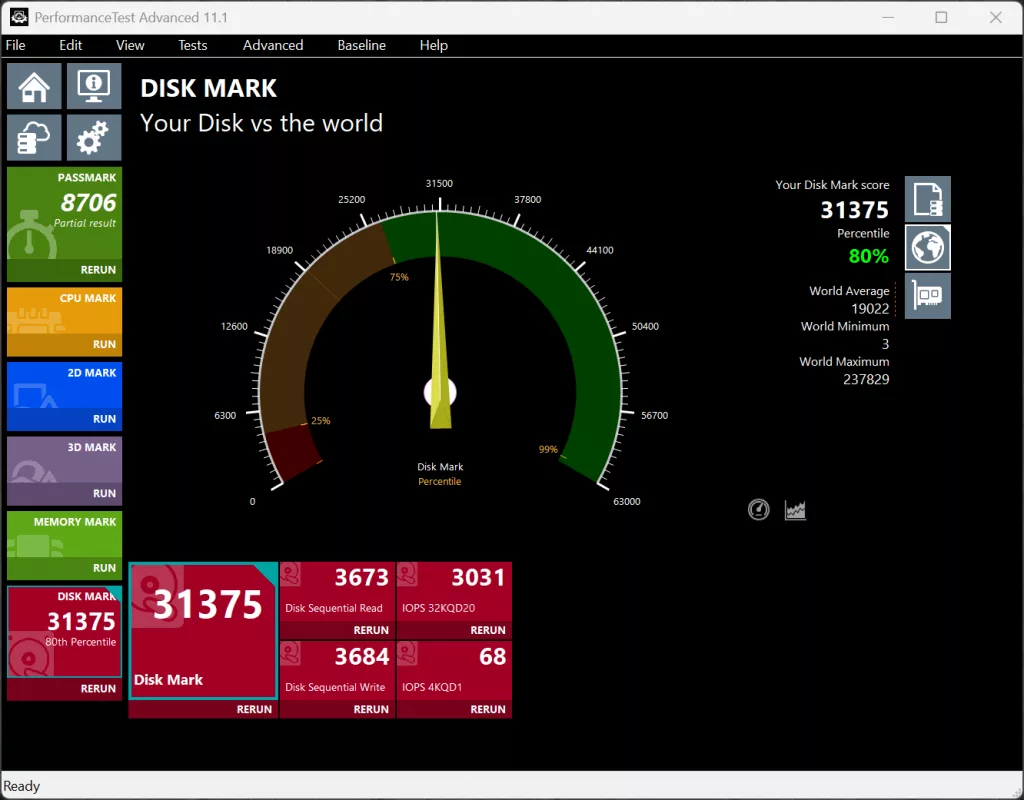System Storage Benchmarks
3DMark
We are using 3DMark’s Storage Benchmark which tests common gaming workload traces. The benchmark tests loading Battlefield V, Call of Duty Black Ops 4, and Overwatch. It tests moving games by copying a Steam folder for CS:GO, and installing Outer Worlds from the Epic Games Launcher, and saving game progress in The Outer Worlds. It tests recording a 1080p gameplay video at 60FPS with OBS while playing Overwatch. We will graph the Overall Benchmark Score, higher is better.

In the 3DMark storage test, we are getting an overall score of 2060. This score is of course not as fast as a dedicated M.2 NVMe internal SSD, but it isn’t too far off the mark to be honest, if you hop over to this graph, you’ll see that this external drive would fall at the bottom, but really not too far off the mark from the slowest internal M.2 SSDs. This actually makes it a viable drive to play games from.
PCMark 10

Running PCMark 10’s quick system drive benchmark, which tests small workload traces, the overall score is 2328 with an access time of 55. That access time is not terrible, for this being an external drive, that isn’t bad at all. This score would also be on the lower end of internal SSD performance, but once again, not too far off from the bottom.
PassMark PerformanceTEST
We are using PassMark’s PerformanceTEST Disk Mark benchmark only. This test benchmarks Disk Sequential Read, Disk Sequential Write, IOPS 32KQD20, IOPS 4KQD1 tests and outputs an overall score (higher is better.)

The overall PassMark PerformanceTEST result is 31,375, which again does place it at the bottom of internal M.2 NVMe SSDs, but honestly, closer to what PCIe Gen3 SSDs offered; it’s not a terrible score.
